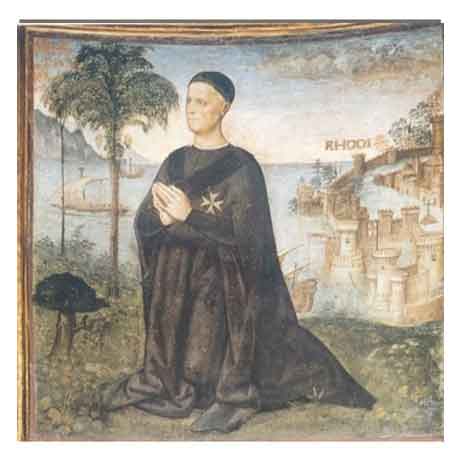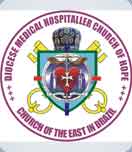THE MONASTICIST™ (monastic healer/scientist)
By definition, Monastic Medicine is “charitable medical
services rendered to the poor using natural agents such as
food, herbs, air, and water; and supernatural agents including
spiritual counseling, prayer, divination, worship, fasting,
and exorcism. As a medico-religious art it encompassed health
care through a system of beliefs that are based on treatment
of God given functions through solace, hygiene, fasting, and
the promotion of the body’s own inherent healing powers.”
History records the origin of nature cure, hydropathy, and
naturopathy was monastic medicine, as the monasteries were the
original universities. The Dissolution of the Monasteries was
a policy dictated by Henry VIII of England (1509-1547) to
close down and confiscate the lands and wealth of all
monasteries in England and Wales. Monastic medicine went into
free fall and clerics entered into the secular universities
and private practice. Yet, it was Robert Hooke FRS (1635
– 1703), an English scientist, natural philosopher and
architect, who is credited to be one of the first two
scientists to discover microorganisms in 1665 using a compound
microscope that he built himself. It was Hooke who coined the
term "cell": the boxlike cells of cork reminded him of the
cells of a monastery, where Western medicine originated. Hooke
also reported seeing similar structures in wood, sponges,
insects, and in other plants. Hooke was born in 1635 in
Freshwater on the Isle of Wight to Cecily Gyles and John
Hooke, an Anglican priest, the curate of Freshwater's Church
of All Saints.
John Wesley (1703 – 1791), an English cleric, theologian, and
hydropathist who was a leader of a revival movement within the
Church of England known as Methodism. Wesley would write the
famous nature cure book "Physic," published in many languages,
that would inspire Sebastian Kneipp (1821 – 1897, a German
Catholic priest and one of the forefathers of the
naturopathic medicine movement.

The first “hospital” of import arose in Jerusalem after the
first crusade, built by the Knights of St. John, a Christian
military Order that would build to date, the world’s largest
hospital of record with more than ten thousand beds. Over
time, the Order of St. John spread over the entire world,
establishing hospices, clinics, and priories to care for the
sick and poor. It would eventually inspire Henry Dunant to
establish the Red Cross and today’s St. John Ambulance corp of
England with worldwide volunteers.
Monastic medicine is now under revival as wellness services in
ecclesiastical, private settings using natural, God-given
agents such as food, herbs, minerals, air, hygiene, and water;
and supernatural agents including spiritual counseling,
prayer, fasting, and laying of hands. As a medico-religious
art, today it fosters wellness through body-mind-spirit
principles as understood as today’s concept of homeostasis,
encompassing a system of beliefs that are based on treatment
of God given functions through achieving balance of
mind-body-spirit, the removal of internal congestion and the
promotion of the body’s own inherent healing powers.
One Order of St. John, the Sacred Medical Order, now over
twenty years in operations, is advancing to the Chiropractic
professor, a special, online Diploma (and Doctorate) program
in modern Monastic Medicine. Graduates become ordained clerics
and are registered humanitarian aid workers conferring
‘protected persons’ status under international humanitarian
law. The aim of the educational program is nature cure as a
primary care cleric under the St. John tradition.
The monastic science based program stems from both tradition
and history, encompassing the more studious (monastic) aspects
of biology and medicine. It follows the evolutionary biology
of Gaia, as a God given ecosystem, thus following the health
laws of the original nature cure system of hygiene, the
microbiome, and extensive use of herbal and homeopathic
remedials. Diet plays a more than ever essential role in
homeostasis with avoidance of GMO foods. Following the
contemporary monks of science, with detail of observation,
cell biology remains core to understanding the metabolic
cycles of nature including photobiology, photochemistry, and
quantum physics. This assures our graduates are more than
ahead in grounded science yet retain clerical attitudes of
nature cure.
Monastic medicine long emphasized observation and diagnosis,
aka discernment. The medieval physicians created a long
tradition of observation followed by such luminaries as Thomas
Sydenham (chorea), Sir Charles Bell (Bell’s palsy), Thomas
Hodgkin (Hodgkin’s disease), Samuel Hahnemann, Jean-Martin
Charcot, Anton Mesmer, William Osler, and many, many others.
In 1867, Osler announced that he would follow his father's
footsteps into the ministry and entered Trinity College in the
autumn. However, he became increasingly interested in medical
science, followed training under Rudolf Virchow, was
instrumental in creating the Johns Hopkins School of Medicine
and became one of the school's first professors of medicine.
Osler quickly enhanced his reputation as a clinician,
humanitarian, and teacher. He has frequently been described as
the Father of Modern Medicine and one of the "greatest
diagnosticians ever to wield a stethoscope". In addition to
being a physician he was a bibliophile, historian, author, and
\was passionate about medical libraries and medical history.
He wrote in an essay "Books and Men" that "He who studies
medicine without books sails an uncharted sea, but he who
studies medicine without patients does not go to sea at all."
His best-known saying was "Listen to your patient, he is
telling you the diagnosis", which emphasizes the importance of
taking a good history.
By definition, Monastic Medicine is “charitable medical services rendered to the poor using natural agents such as food, herbs, air, and water; and supernatural agents including spiritual counseling, prayer, divination, worship, fasting, and exorcism. As a medico-religious art it encompassed health care through a system of beliefs that are based on treatment of God given functions through solace, hygiene, fasting, and the promotion of the body’s own inherent healing powers.”
Page navigation
sub page menu

Text